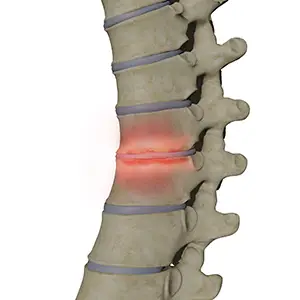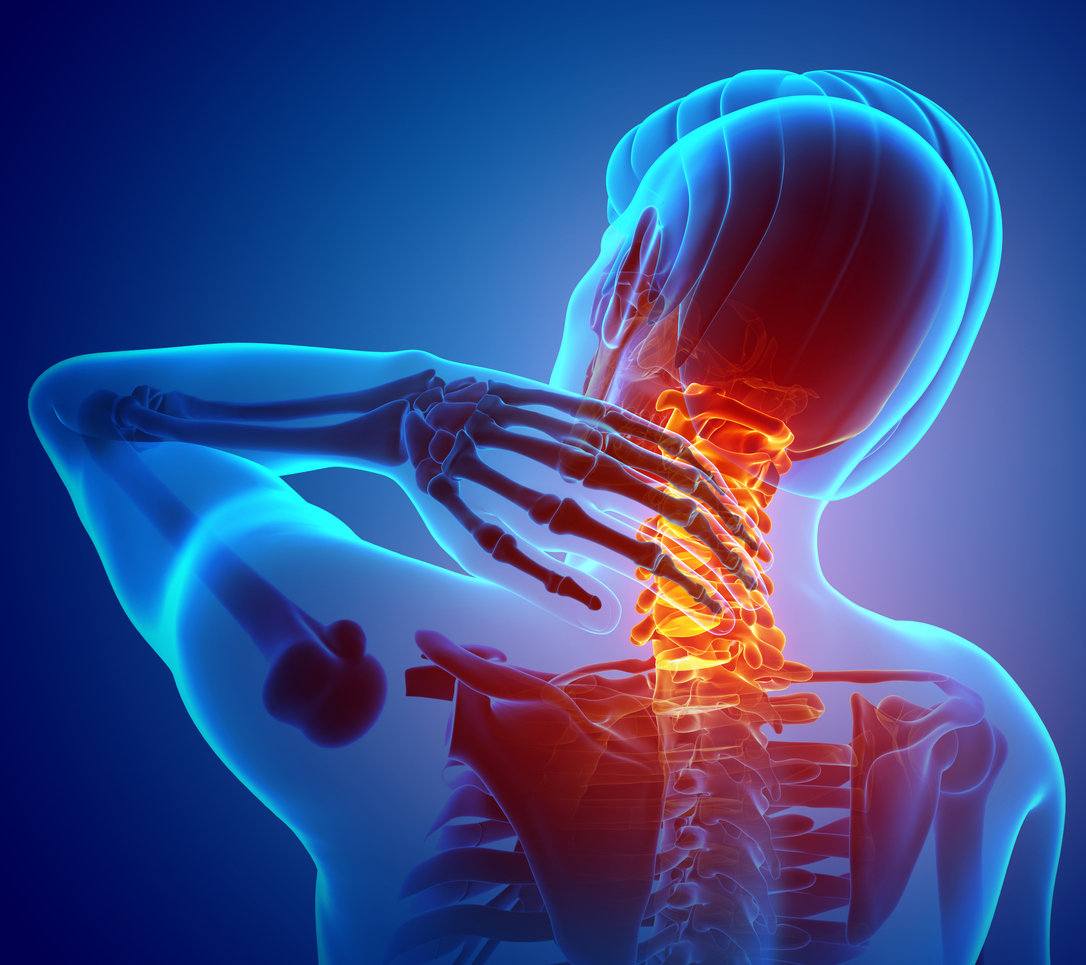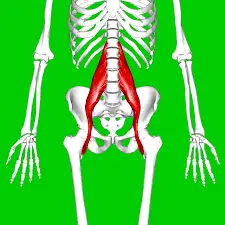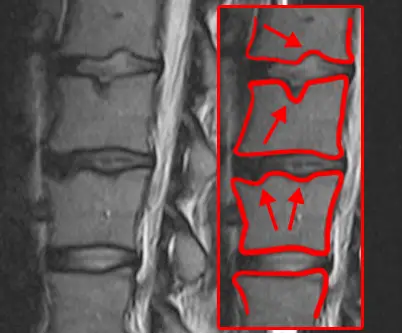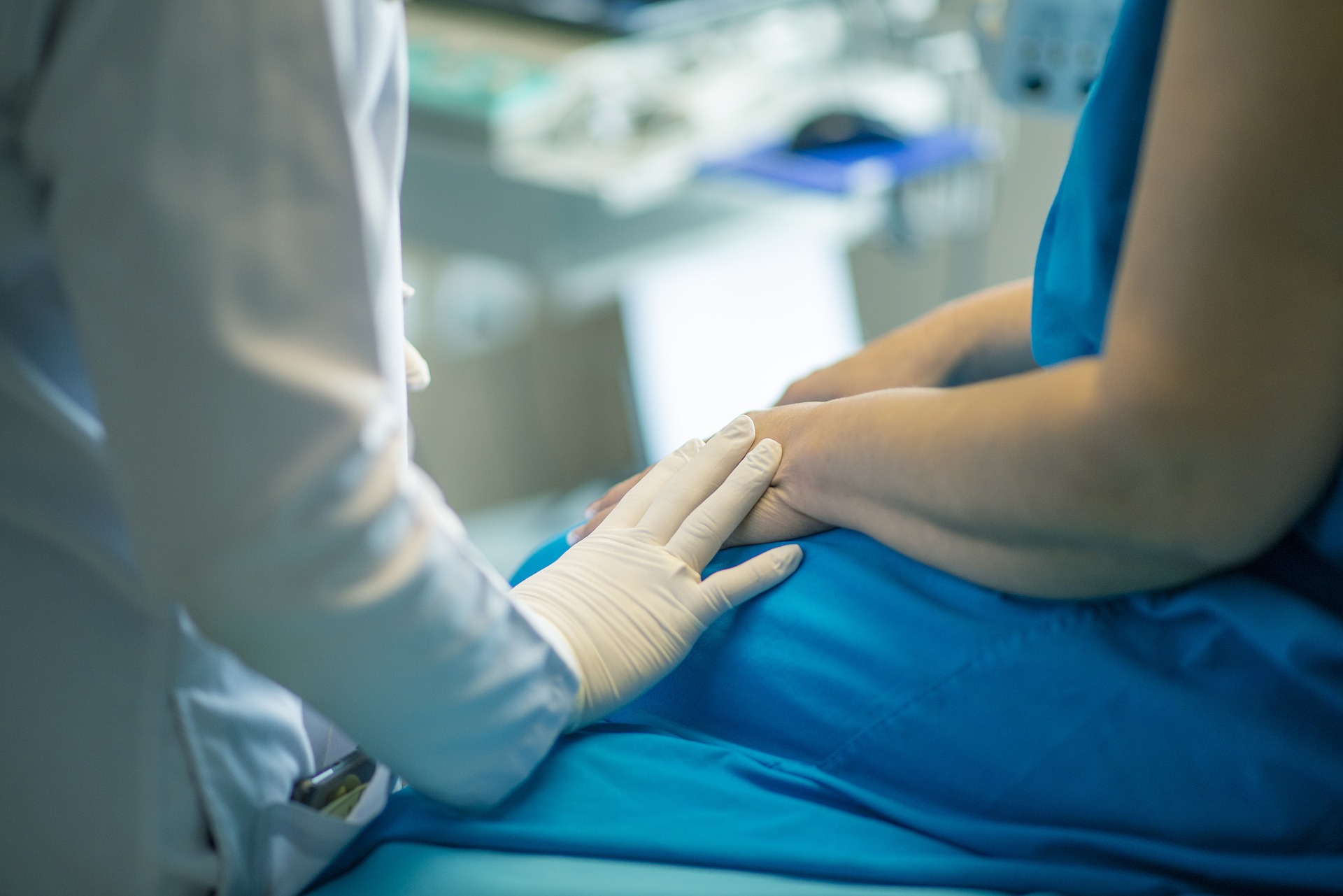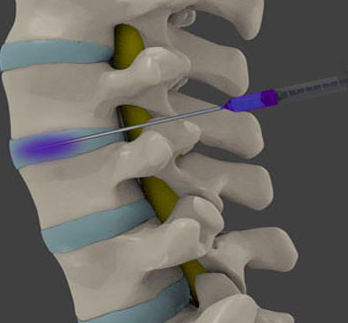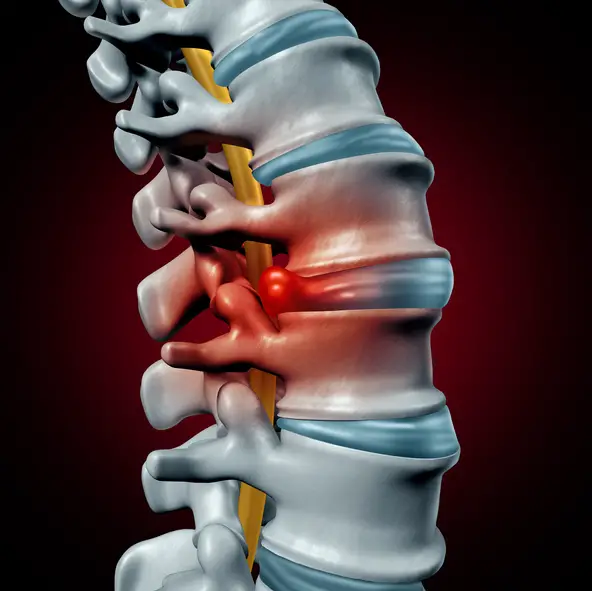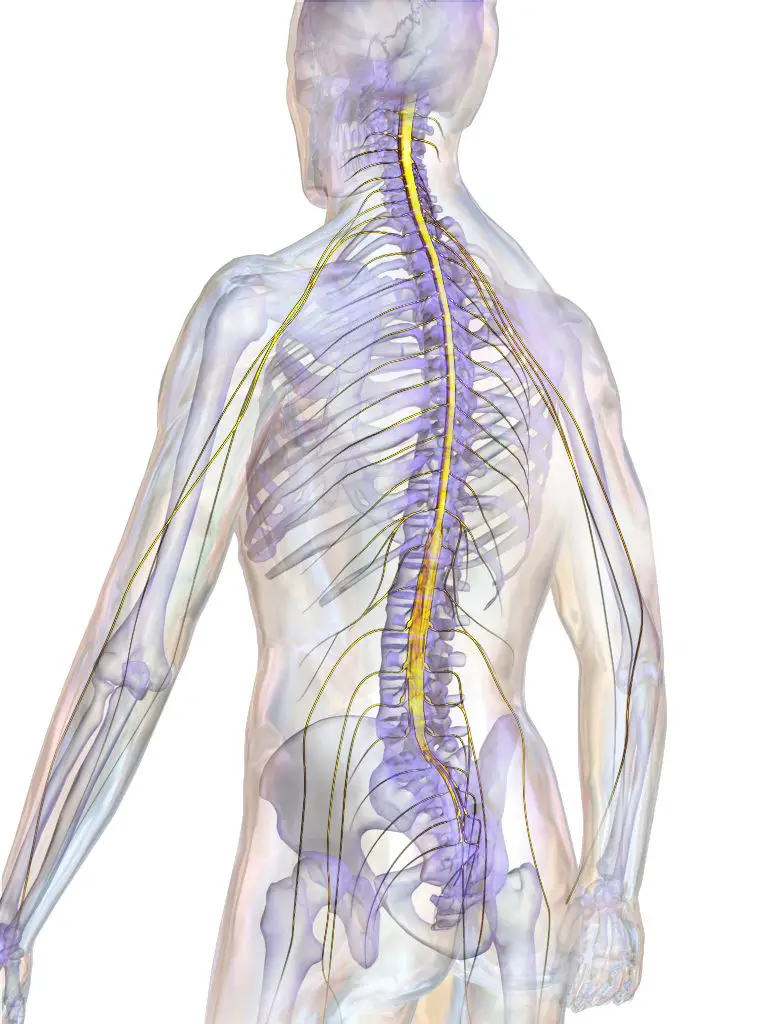Article reviewed and approved by Dr. Ibtissama Boukas, physician specializing in family medicine
La spondylodiscitis is a condition that affects both the vertebrae and intervertebral disc. It is serious and can lead to serious complications if left untreated.
How to recognize the warning signs in case of spondylodiscitis ? What are the main causes of this infectious disease ? Who to contact?
Find out in this article everything you need to know about spondylodiscitis to get an idea of what to do if you encounter this disease.
What is spondylodiscitis?
Definition of spondylodiscitis
La spondylodiscitis is a microbial infection that affects both the vertebrae and the intervertebral discs. If the inflammatory involvement affects only one or more vertebrae, the disease is called " spondylitis ". Indeed, the word "spondylodiscitis" comes from the two Greek words "spondulos" and "diskos" which respectively mean " vertebrate and "Disk". This pathology is severe and can expose to the risk of neurological sequelae and spinal deformities.
Who are concerned?
It is a rare infectious disease. Among the different types of bone and joint infections (osteomyelitis), it represents only 2 to 7%.
Although it can affect both men and women at the same time, it is much more common in men, especially around the age of 60 or the age of adolescence. This is explained by the fact that during these two periods the bones undergo great changes. These have the ability to promote the vulnerability of the immune system to the risk of infection.
Origin of spondylodiscitis
Contamination usually occurs after sepsis and occurs through blood. In the majority of cases, the germs at the origin of this infectious disease are:
- pyogens such as Staphylococcus aureus;
- tubercle bacilli (Mal de Pott);
- gram-negative bacilli such as Escherichia Coli or Streptococcus.
In rare cases, it can be caused by bacteria such as Salmonella, Brucella, or sometimes even fungi of the type Candida albicans.
Depending on the germs responsible, spondylodiscitis can follow two types of evolutionary mode. In case of pyogenic bacteria, its course is acute. While in the presence of tuberculosis or pyogenic infections for which antibiotic therapy has been insufficient, its evolution is chronic.
This is because tuberculosis is usually located in the chest. On the other hand, pyogenic bacteria can reach several areas such as the Lumbar spine, thoracic spine, cervical spine as well as different floors.
Risk factors for spondylodiscitis
The main risk factor for this disease is low immunity. Also, according to statistics, among patients with spondylodiscitis, more than 30% are diabetic, almost 10% suffer from chronic alcoholism and about 5% are suffering from either cancer, end-stage renal failure, hepatic cirrhosis or systemic disease.
Spondylodiscitis can also result from:
- a surgical intervention of the spine ;
- a sample of cerebrospinal fluid (lumbar puncture);
- a urinary infection, prostate, dental, skin, digestive, cardiac or pulmonary infection;
- discography or epidural infiltration.
What are the signs of spondylodiscitis?
The main symptoms of spondylodiscitis are :
- pain in the spine associated with significant local stiffness;
- pain located in the nerve paths: cruralgia, sciatica, cervico brachial neuralgia ;
- chills with fever in most cases of pyogenic spondylitis;
- deterioration in general condition.
What tests are useful for diagnosing spondylodiscitis?
Le diagnosis of spondylodiscitis can sometimes be difficult. Generally, different types of imaging examinations must be carried out to be able to diagnose it: X-ray, bone scan, CT scan, MRI, etc.
An x-ray is a medical photography technique that uses electromagnetic radiation (X-rays). During a spondylodiscitis, it allows to observe a disc pinching overall, demineralization of the vertebrae, erosions and condensation of the vertebral endplates.
A bone scan involves administering radioactive isotopes into the body. The results are obtained when their radiation is captured by the organism to be examined. In the case of spondylodiscitis, the practitioner may find hyperfixation in the spine.
A CT scan involves measuring the absorption of X-rays to obtain a 2 or 3 dimensional image of any anatomical structure. Combined with an injection of iodinated contrast product, it can locate intrasomatic geodes, epiduritis and possible abscesses in the soft tissues.
Although these three techniques make it possible to diagnose spondylodiscitis, their signs may appear late. It is MRI (magnetic resonance imaging) that allows earlier detection of this pathology. To do this, it must be accompanied by an injection of gadolinium. This examination makes it possible to highlight the hyposignal of the discs and vertebrae as well as the affected floors. He also shows epidural abscesses and various signs of medullary or radicular pain.
If necessary, other examinations can be carried out such as a blood test or a vertebral disco biopsy.
Spondylodiscitis: is it serious?
In the event of the appearance of one or more symptoms, a medical team must be contacted urgently. Being a serious disease, spondylodiscitis requires immediate treatment. For this purpose, hospitalization followed by immobilization in bed becomes essential.
To prevent spinal deformity due to vertebral compaction, a corset or a plaster shell proves to be very useful. It is also necessary to relieve pain.
Hospitalization is necessary until the pain disappears. It can take 10 to 30 days for pyogenic spondylodiscitis. On the other hand, in the case of Pott's disease, the period of hospitalization can extend up to 1 to 3 months.
Consequences of spondylodiscitis
This pathology can have immediate consequences such as vertebral weakening or compression, compression of the marrow by an abscess, infection of the meninges or aggravation of radiculo-medullary signs.
Depending on the course of the infection, other late consequences may also be observed. This is the case of the vertebral block which indicates the state of two vertebrae welded opposite each other.
How to treat spondylodiscitis?
Antibiotic therapy
Antibiotic therapy can treat spondylodiscitis. It must be followed for a long time and be adapted to the germ in question:
- staphylococci: cefotaxime (100 mg/kg) combined with fosfomycin (200 mg/kg) followed by a combination of fluoroquinolone and rifampicin;
- gram-negative bacilli: a combination of cephalosporin of 3e generation and fosfomycin or cephalosporin of 3e generation and aminoside or alternatively aminoside and fluoroquinolone;
- Mal de Pot: quadruple anti-tuberculosis antibiotic therapy (during the first 3 months) followed by dual chemotherapy for the next 9 months.
If the infection is of hospital origin resistant to methicillin, antibiotic therapy consists of the combination of vancomycin and fusidic acid or fosfomycin. In any case, it is always advisable to consult the emergency room as soon as the symptoms of spondylodiscitis appear.
Surgery
Surgical intervention is only done for exceptional cases such as the evacuation of a epidural abscess or an decompressive laminectomy.
If the spondylodiscitis is detected early, antibiotic therapy can take effect during the first week of treatment. A favorable evolution can be observed quickly. On the contrary, if treatment is delayed or absent, the disease can lead to various complications.
If it takes 2 to 3 months to fully recover from a pyogenic spondylodiscitis, it takes 12 for one tuberculous spondylodiscitis.

